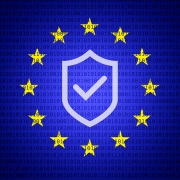Email marketing must be engaging. While you can achieve this through great copywriting, you can also enhance your email campaigns with attention-grabbing and interactive visuals. This is worth doing – as long as you get it right.
Often, companies make the mistake of putting rich media content into their emails with very little idea about how it will display on different email clients. Each email client has its own quirks and it’s important to understand these before sending out emails that only half your list will be able to appreciate.
Luckily, we’re here to help! Here’s the low down on when and when not to use rich media content in your emails…
GIFS: What are they?
Otherwise known as ‘Graphics Interchange Format’, they’ve been around since the 80’s, but weren’t widely used in email until much later. GIF supports both animated and static images and have been used extensively in email campaigns due to their wide support across browsers and email clients.
Why would you use them?
For starters, animated GIFs add an instant element of delight to any campaign, which typically is not possible with static email designs. They give the user a sense of excitement and can be useful to inject humour and showcase products. One brand who does this really well is Buzzfeed. They have embraced the use of GIF in their emails, especially in recent years. I receive a weekly email about cats from them which always features a funny cat GIF – I open it every single week and usually end up clicking through to the site as a result.
Another example is Sprout Social, who used an animated GIF to show off their latest functionality and interaction with their redesigned iPhone app. West Elm also used a clever GIF to display a selection of lamps; they used each frame to display a lamp turning on and off, it was really eyecatching.
How do they work?
GIFs operate on a frame-by-frame basis. To make one, you need to provide all the frames of your animation. Each frame is its own bitmap image, this means that the file size can get very large, very quickly which will cause loading problems in many email clients. With GIFs, the best thing to do is to use as few frames as possible to convey your message.
How do you create one?
There are many online gif creators, but if you want a slightly more technical approach, you can edit your images further in a programme like Adobe Photoshop and then create your frames through their timeline option.
Are there any limitations?
With anything technical, there are going to be limitations. Some email clients do not support GIF – for example, Outlook will freeze a GIF on its first frame upon arrivals in your inbox. The way to get around this is to make sure the first frame of your GIF is one you’re happy for your clients to see, or you could use dynamic content and segment your data into what clients they are using. This way, you could send your fancy GIFs to everyone using an email client that supports them and send a different static GIF/JPG/PNG to everyone else who wouldn’t be able to fully appreciate your GIF.
Here’s a handy infographic to show you which email clients support which functionality.

Video
Hosting video in email is a tricky business because two of the main email clients (Gmail and Outlook) don’t support video playback. This isn’t a reason to avoid using it altogether, as long as you are prepared to segment your data accordingly. There are also a number of ways to get around this and still give your customer an interactive experience… without your emails breaking.
1. You can include an image from your video and put a play button over the top so it looks like a video player. When your users click on the image they will be taken to a landing page where the video will play for them. This creates the illusion of video within an email without actually facing the potential breaks. It will save you time as you don’t have to segment your data by email client and you can rest easy that all your users will enjoy your email. It could look something like this (below).

2. Use a GIF. This is my favourite work around for video. It involves taking multiple screenshots of the video you are going to link to, and setting them up frame by frame with a play button over the top. The GIF will then scroll through the different screen shots giving the effect of a video playing. Ideally you would set it to loop so the effect was continuous while your customer viewed the email. Ralph Lauren have done some excellent work with these which you can view here.
Is your content responsive friendly?
Another thing to keep in mind when creating emails with rich media is how it will respond on mobile as well as desktop. With the rise in people opening emails on their mobiles, mobile design is more important than ever. There are a number of things you can do to content to make sure your users get the best experience.
Some brands choose to hide some content on mobile and keep the message as short as possible to avoid users having to scroll down the email. This can allow users to get to the call to action faster and avoid wandering attention spans. Other brands choose to stack images so content and images that were next to each other appear one after the other, as if in a list. Others use shrinking down which can work really well with images containing large text that could not be stacked but resolution will suffer with smaller images on mobile and in many cases it is better to hide these. You can use a combination of all of these things within one email, determined by your CSS (cascading style sheet).
So, for your next campaign why not try some of these methods? It can vastly improve user experience and make your emails the emails your customers look forward to receiving.














